There are three basic discrete delay functions: DELAY FIXED, DELAY MATERIAL and DELAY INFORMATION. The first requires a fixed delay time and, with a fixed delay time all the functions behave the same. It is only when the delay time changes over time that differences emerge.
Material Delays including, DELAY MATERIAL, DELAY1, DELAY3 and DELAY N all have the property that they preserve quantities. That is, the accumulation of all the input is matched to the accumulation of all the output. This means when the delay time decreases, the amount of output will increase and vice versa.
Information Delays including DELAY INFORMATION, SMOOTH, SMOOTH3 and SMOOTH N all preserve the range of the input. That is, these functions will never return a value bigger than the biggest input value or smaller than the smallest input value no matter what happens to the delay time. This is completely appropriate for situations where the delay is being used to slow a signal (for example from price to target production) to account for the delays in processing information. If you were to formulate expected price using a material delay and the perception time decreased it would cause an increase in expected price even if price were constant.
The model delay1 demonstrates these three functions and how they change in response to changing delay time.
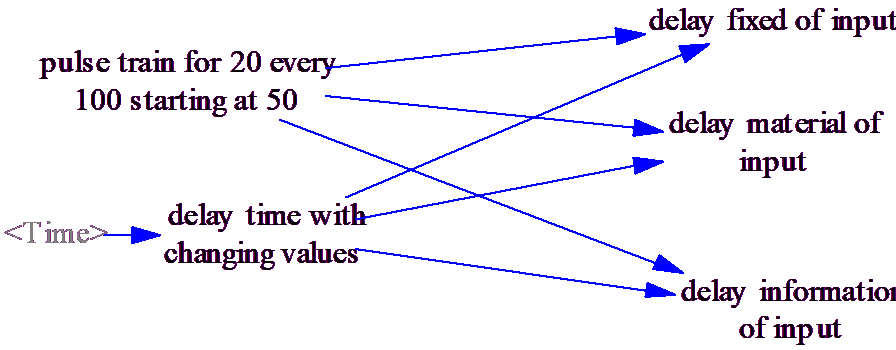
In this model the delay time is set up to highlight these difference. From time 50 to 100 it is constant and all the functions do the same thing:
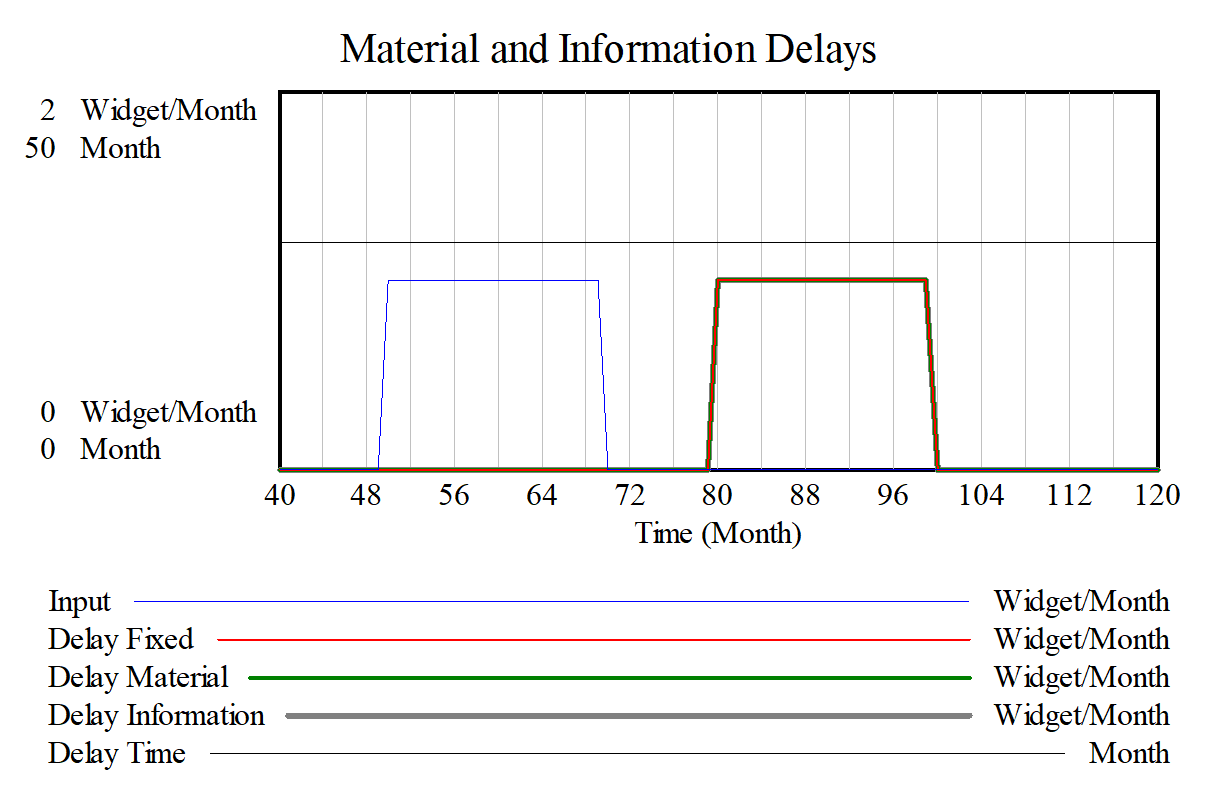
Then from Time 150 to 200 it is constant at a different value:
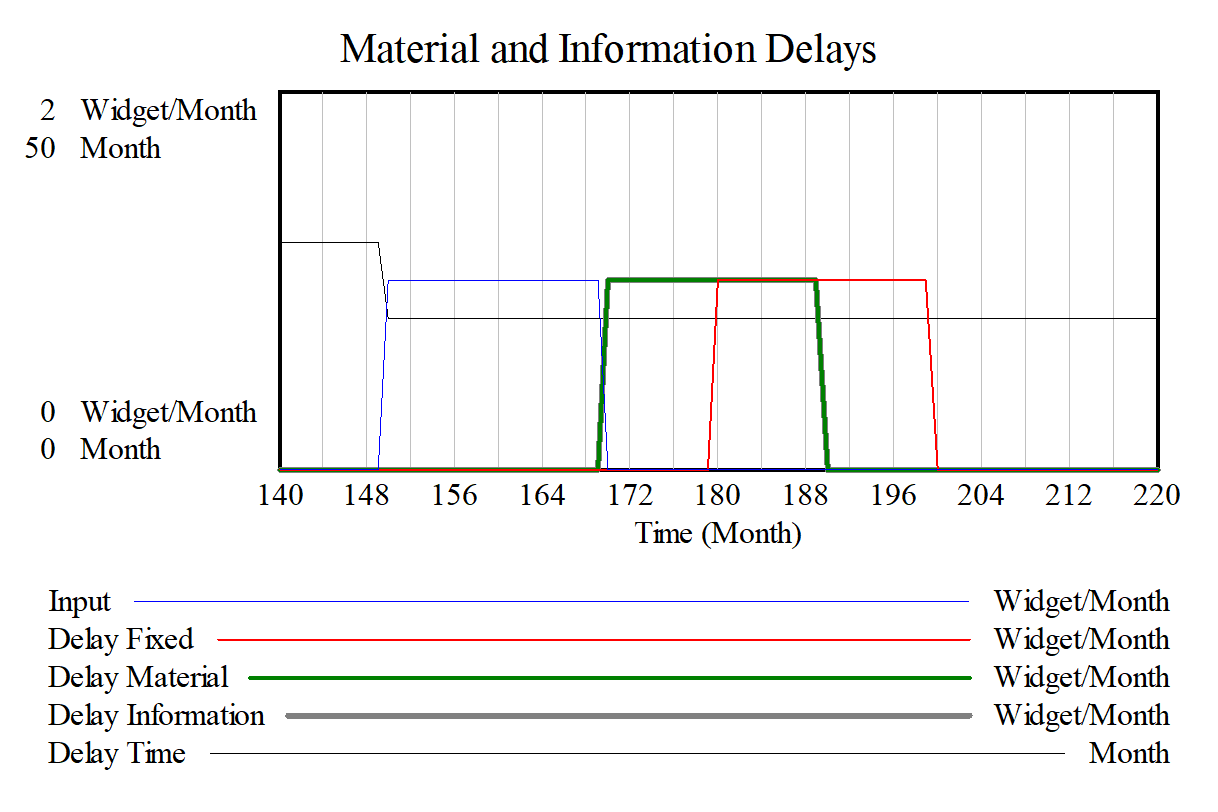
The DELAY FIXED function uses the delay time that it initially had (30) while the other two use the changed delay time of 20. No matter what happens to the delay time the DELAY FIXED function will always use its initial value. The fixed delay is dropped in the following examples.
If the delay time decreases over time we get
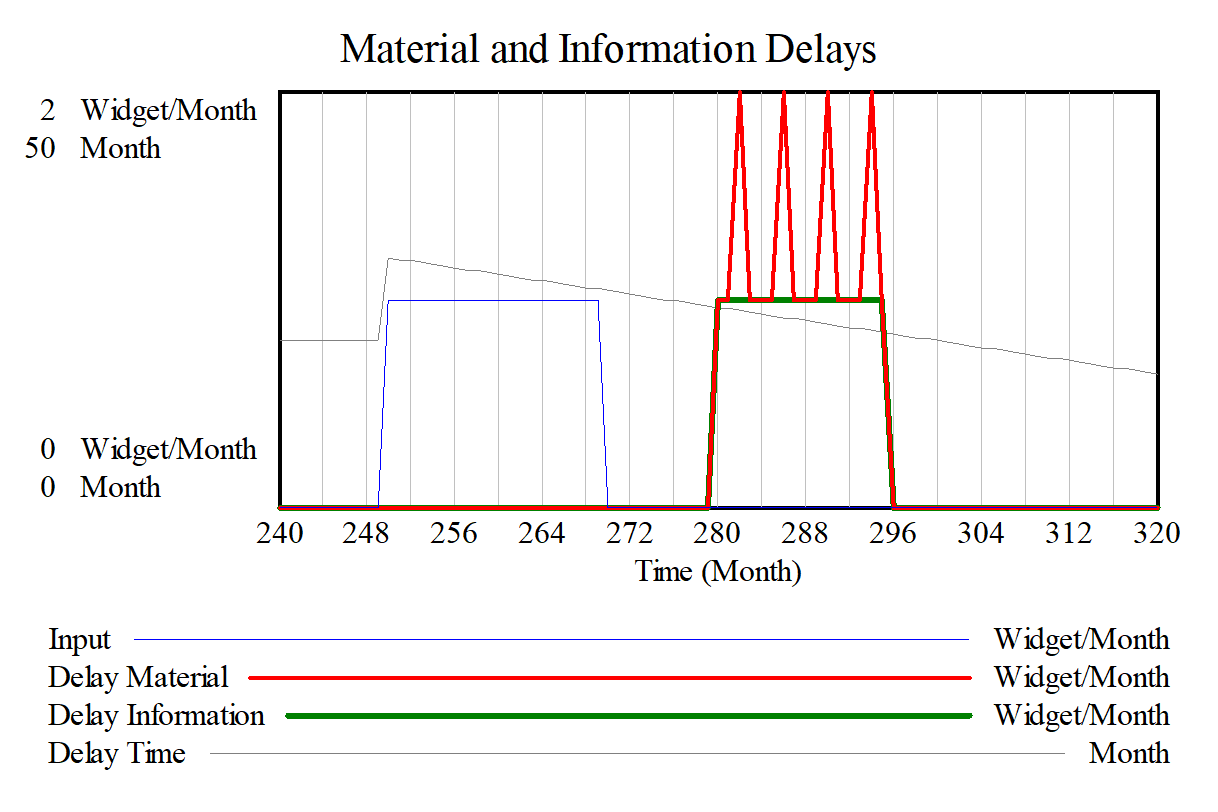
The information delay has a constant output, but for a shorter duration. The material delay has the same duration, but throws out some additional material on several occasions so that the total output is the same as the total input (20 Widgets).
If the decrease in delay time is more sudden we get:
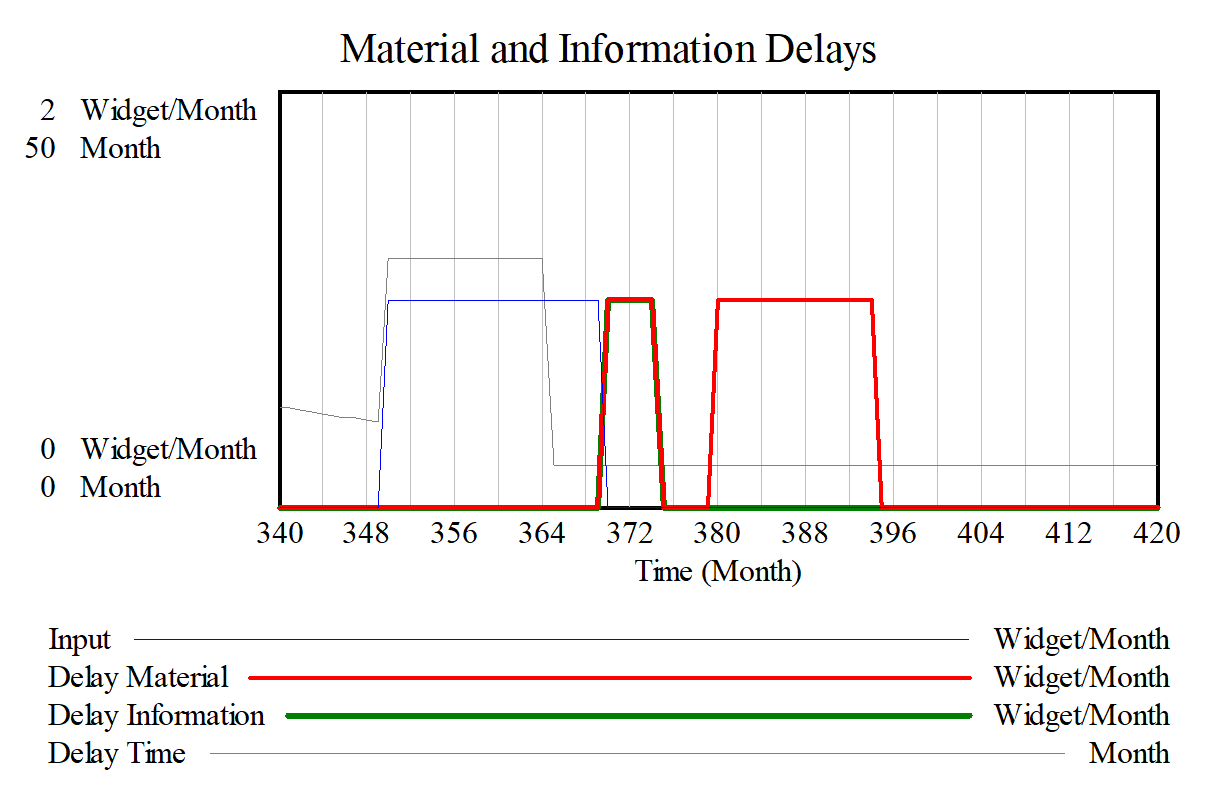
Here the widgets in the material delay actually pass those put into the delay earlier and come out first. With the information delay, on the other hand, that information is treated as obsolete and discarded.
Finally when the delay time is increasing:
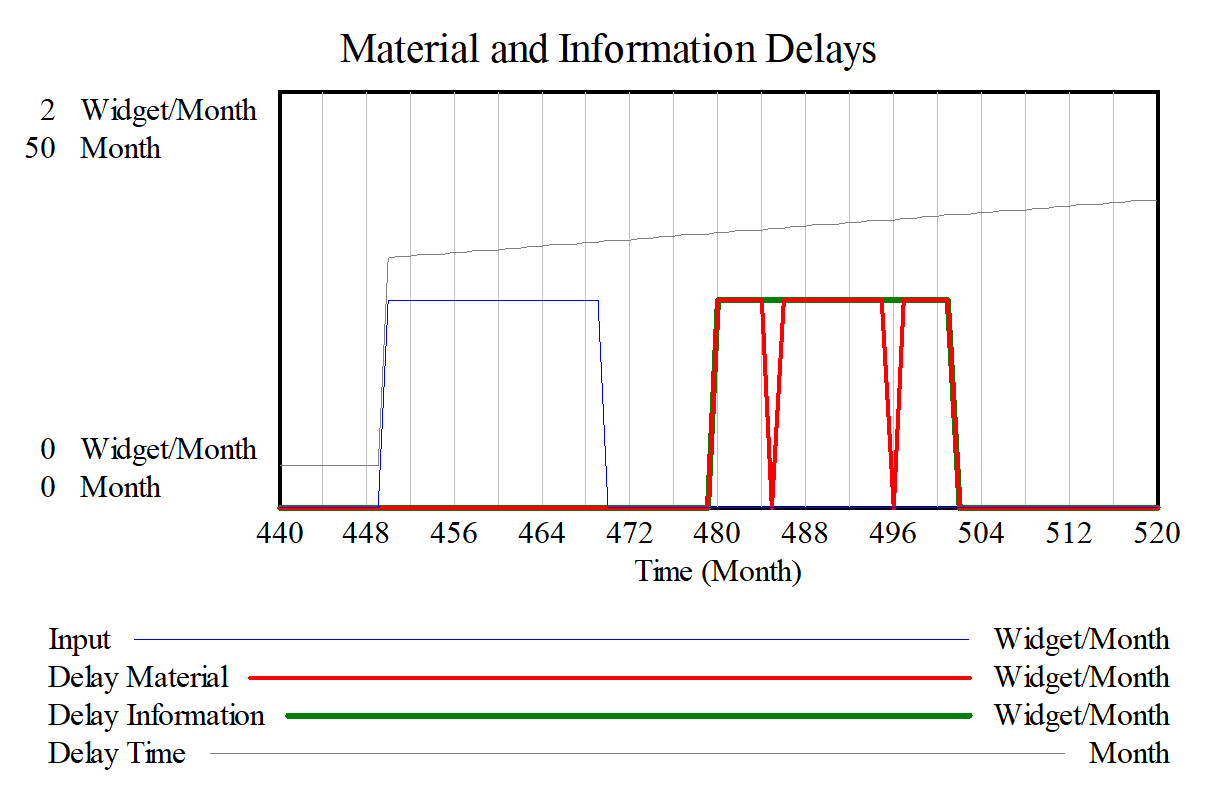
The duration of output is increased. With the material delay this means that at two times nothing comes out while the information delay simply holds constant at 1 widget/month.
A note about material passing other material. If you do not want this to happen you can use the DELAY CONVEYOR function. See the discussion of this below.